—New study:
Earth's capacity for storing CO2 underground in pore space may be much less than expected
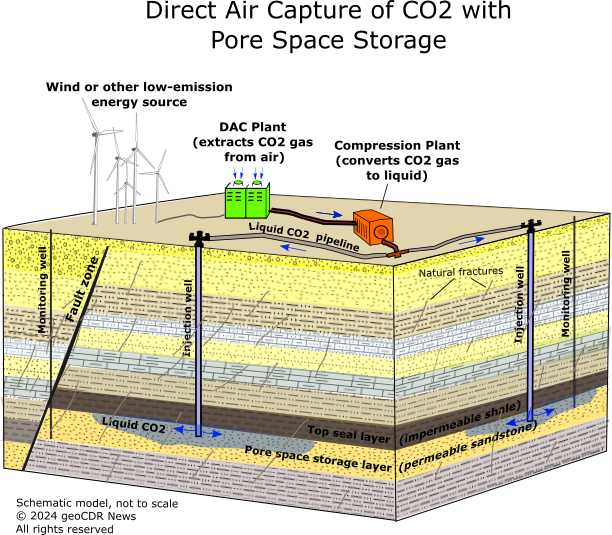
Storing captured CO2 as a semi-liquid in the tiny pore spaces of sedimentary rock underground is widely considered to be one strategy for reducing global warming. CO2 would be captured from industrial emissions (carbon capture and storage, CCS) and industrial direct air capture plants (direct air capture with pore space storage, DACPS).
Rock layers in sedimentary basins throughout the world have been widely estimated to have enough pore space to ultimately store a total of gigatonnes. This far exceeds the 2,000 GtCO2 that has been widely viewed as requiring storage by the year 2100 — suggesting there should be no concern about adequate future storage capacity.
But a new modelling study . . . Read more
Feasibility study of nuclear-powered completed
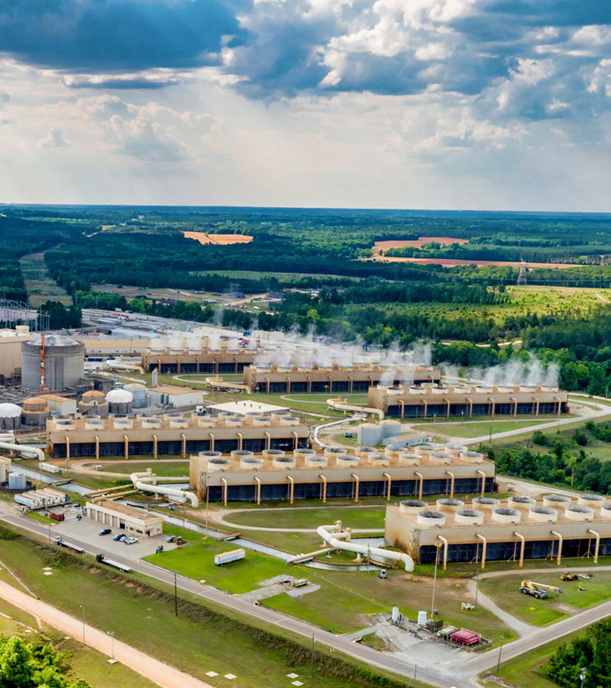
A direct air capture (DAC) plant uses a lot of heat energy to separate CO2 from air. And a nuclear power plant throws off a lot of excess heat while generating electricity.
So, why not marry the two, and have a nuclear power plant send its waste heat to a DAC plant?
That is what the U.S. Department of Energy (DOE) considered in a feasibility study that was completed in 2024.
The nuclear power plant in the study is Southern Company’s Joseph M. Farley nuclear power plant located about 300 km southwest of Atlanta, Georgia near Dothan, Alabama in the southeastern United States. The Farley nuclear plant produces 2,775 megawatts of thermal energy to generate 1,776 megawatts of electricity — enough electricity to supply about 450,000 homes.
The feasibility study included storing the captured CO2 . . . Read more
Licensing in progress, agreements signed
Direct air capture will supply some of the CO2 in the first industrial-scale carbon capture and storage project in the southeastern Mediterranean
EnEarth, a subsidiary of the London-based oil and gas company, Energean, recently that direct air capture (DAC) will supply some of the CO2 that will be stored underground in the company's Prinos carbon capture and storage (CCS) project planned in Greece, in the northern Aegean Sea. Prinos is a oil field.
The project initially will store 1 million tonnes of CO2 per year that will be captured from the exhausts of industrial plants in the region, as well as CO2 captured from open air by the DAC plant. The relative proportions of CO2 from DAC and industrial plants were not specified in the announcement. The €500 million first phase of the project is expected . . . Read more
Equipment malfunctions at CCS sites in Norway and U.S. underscore need for robust monitoring, reporting, and verification in carbon storage underground
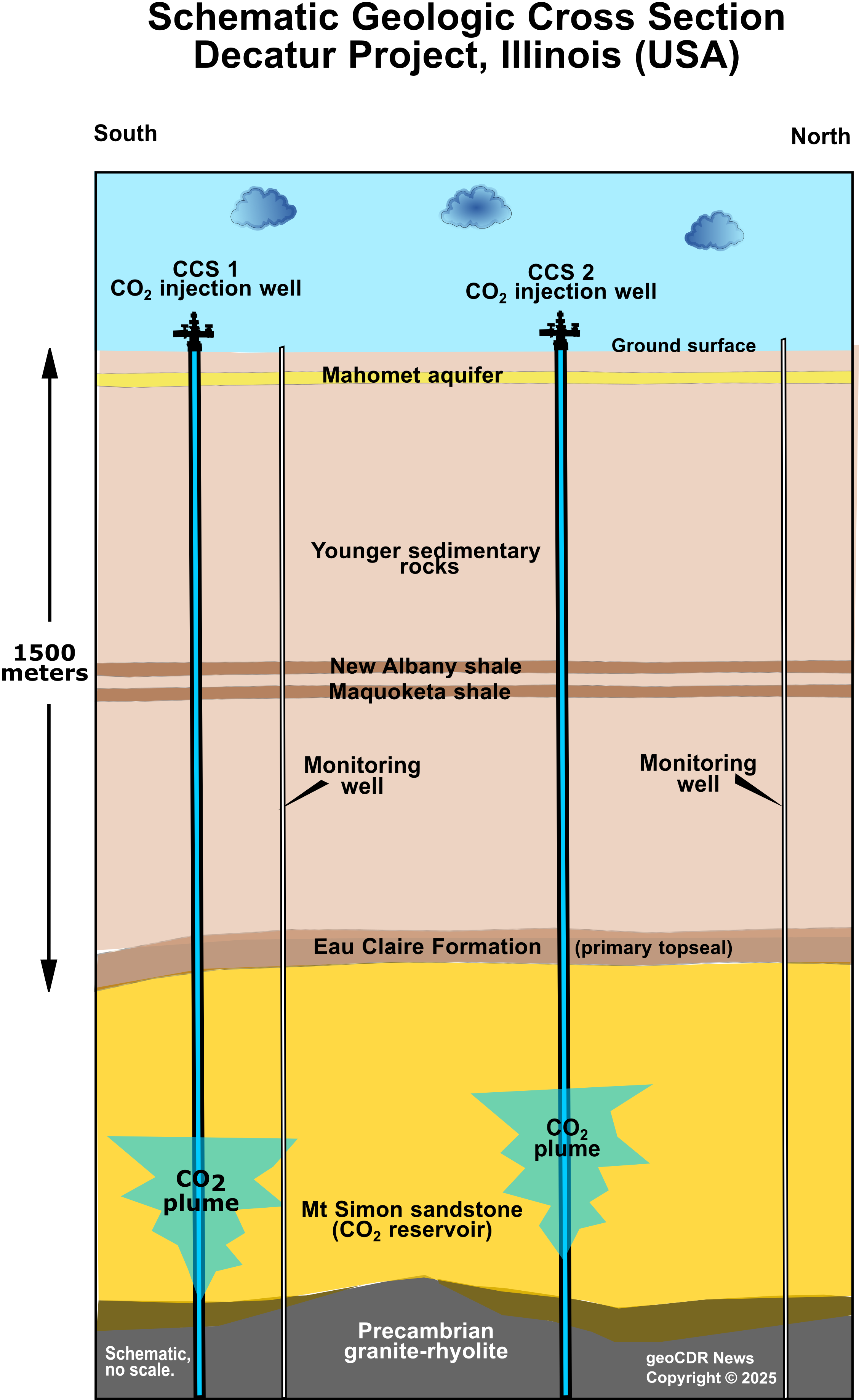
Two incidents at prominent carbon capture and storage (CCS) projects — in Norway’s Sleipner gas field and at Archer Daniels Midland’s (ADM) Decatur corn-ethanol plant in Illinois (USA) — have highlighted challenges in accurately accounting for and securing stored CO2. Both incidents involved equipment malfunctions. Together, they underscore the need for transparent monitoring, rigorous measurement protocols, and regulatory oversight as CCS, DACPS, and DACCM projects scale up for industries' climate mitigation efforts.
At Norway's Sleipner gas field, operated by Equinor and in operation since 1996, the company reported in 2021 that a malfunctioning flow transmitter led to the company's over-reporting of CO2 injection volumes during the period 2017 through 2021. The amount of CO2 that was over-reported was more than . . . Read more
CarbonCapture Inc. shifts strategy, plans DACPS project in Louisiana carbon removal hub
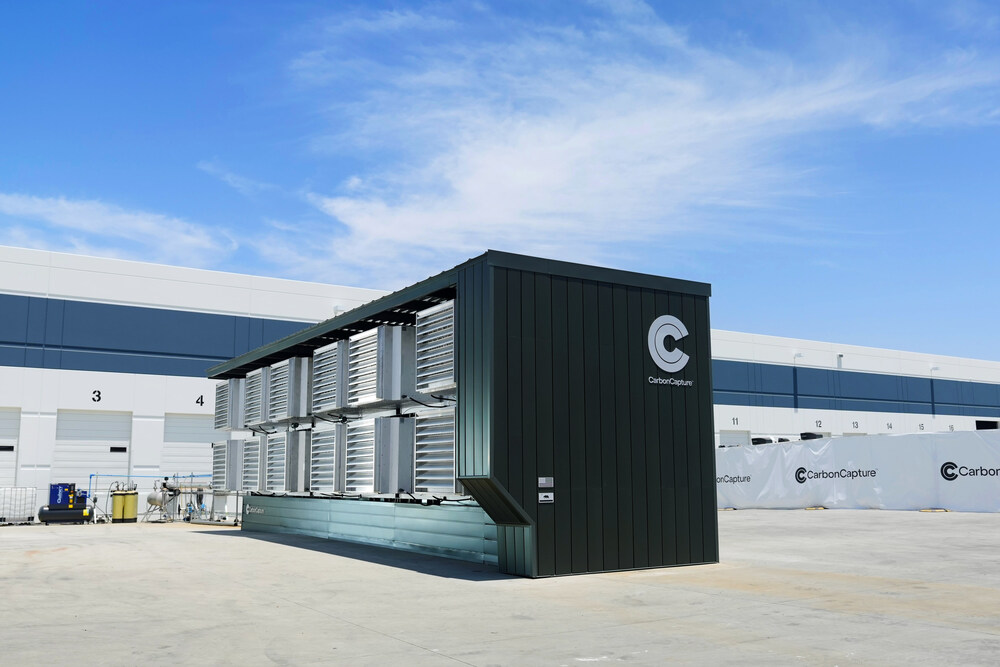
CarbonCapture Inc., a Los Angeles-based developer of direct air capture (DAC) systems, announced in February 2025 a major strategic pivot, moving away from its planned high-profile project in the western U.S. state of Wyoming and concentrating future efforts in the southeastern state of Louisiana.
The company had originally planned to build Project Bison in Wyoming, a facility intended to become the world’s largest DAC plant, capturing up to 5 million metric tons of carbon dioxide per year through solid sorbent technology. That design relied on . . . . . . Read more
STRATOS, the world’s largest DACPS plant is under construction in West Texas (USA)
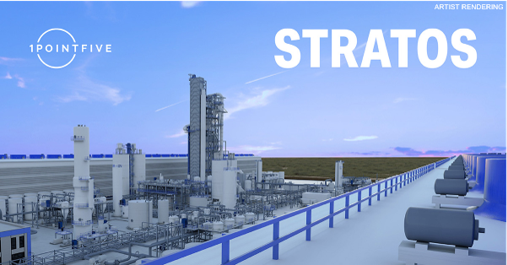
A new direct air carbon capture and storage plant, with pore space storage (DACPS) is under construction in Ector County, Texas that is designed to capture more CO2 from the atmosphere than any other DAC plant in the world . . . Read more